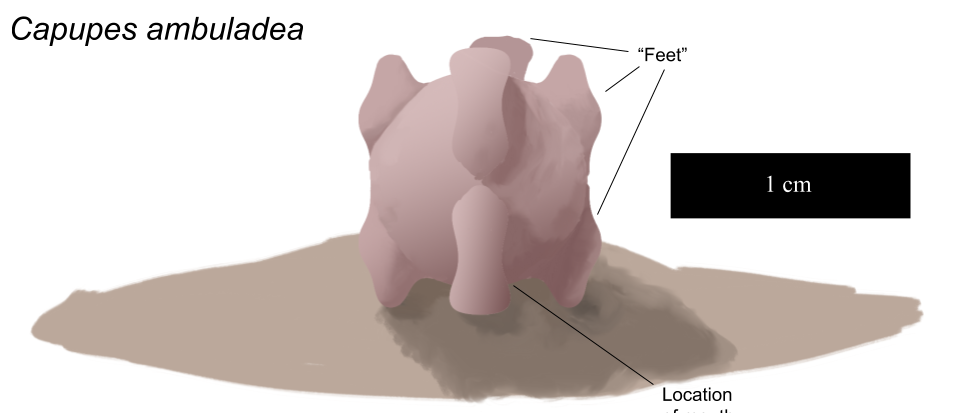HOME | DD
 DarthTomato — First Capuped and Earliest Known Quadrilaterian
DarthTomato — First Capuped and Earliest Known Quadrilaterian

#alienlife #aliencreatures #speculativebiology #specevolution #alien #aliencreature #alienspecies #exobiology #speculativeevolution #specevo
Published: 2020-10-06 22:41:41 +0000 UTC; Views: 460; Favourites: 5; Downloads: 0
Redirect to original
Description
Description:Shown here is Capupes ambuladea, the earliest known member of the clade Quadrilateria (though it is rather derived and likely does not resemble the ancestral Quadrilaterian), and also the earliest known member of Capupeda. The remains are dated to around 586 million years ago, firmly in the Fimulidian Period (lasting from 697 - 559 million years ago). The body is larger, possibly an adaptation to eating more food at once, and storing some in case of sparse edible matter around.. But the main aspect clearly different to the xenopaleontologists at first glance were the feet on its bottom and its top. Not only that, but it has an opening at the middle of its top and bottom, both of which could possibly function as mouths or exits for bodily waste. The reason for this mirroring of the body is unknown, but a common thought is that due to the environment its remains were found in, a nearshore marine deposit, this may be an adaptation if it was flipped around by waves. While other organisms of its time period would have been unable to flip over, and would be at the mercy of any passing waves, a flipped over Capupes would have no issue, as the top and bottom are the heavier parts of the body anyways and it would most likely land on these.
The naming of the clade Quadrilaterian is rather unfortunate. Chief xenopaleontologist of Expedition 3, Sumar Igno, believed this specimen to mark the earliest known fossil of the clade for which Tetramerism was the ancestral state. He placed pressure on his crew to finish the paper as fast as possible in order to be the first to publish a fossil from the Fimulidian period of Terralitus. It had been thought at that time the first Xenovivians were bilaterally symmetric, and so Sumar Igno proposed the name Quadrilateria for the proposed clade. Just their luck though, Expedition 2 published a paper describing the fossil of Copingimus a week after they published theirs on Capupes, and providing evidence for the now widely supported idea of the first Xenovivians being ancestrally tetrameric. Sumar Igno has later been quoted calling this the "greatest mistake of his life." Most xenopaleontologists agree with the sentiment.
The artist's reconstruction shown above is meant to highlight the distinctiveness of Capupes compared to the Xenovivians before it, but the "feet" have been criticized for being far too defined in the drawing, and not how they would have been in life. The fossil was stretched during the fossilization process, which was the cause of this misunderstanding.
First drawing of mine that was done digitally from start to finish! I guess it wasn't really hard though since it's just a sphere with some other parts added on.





















